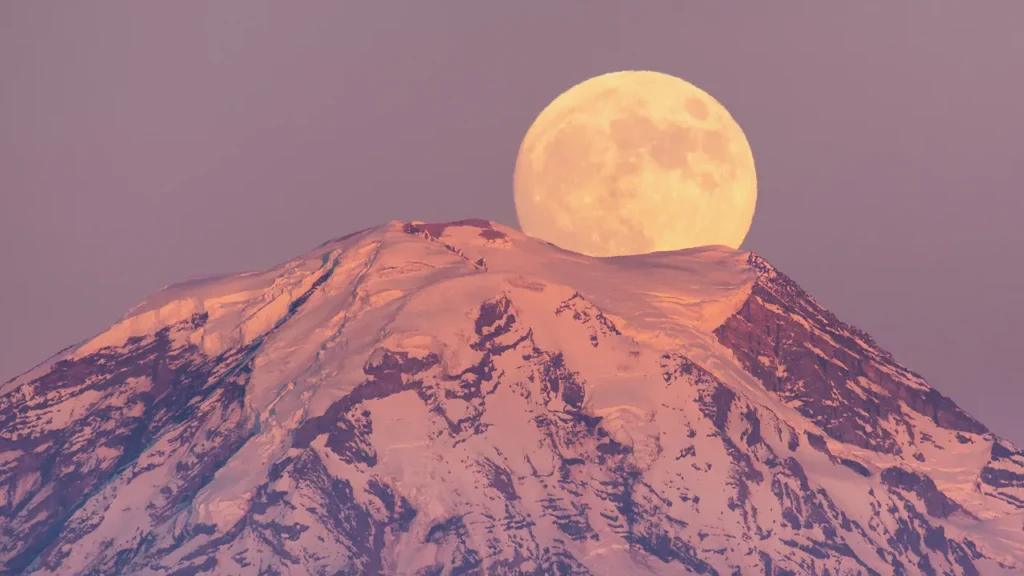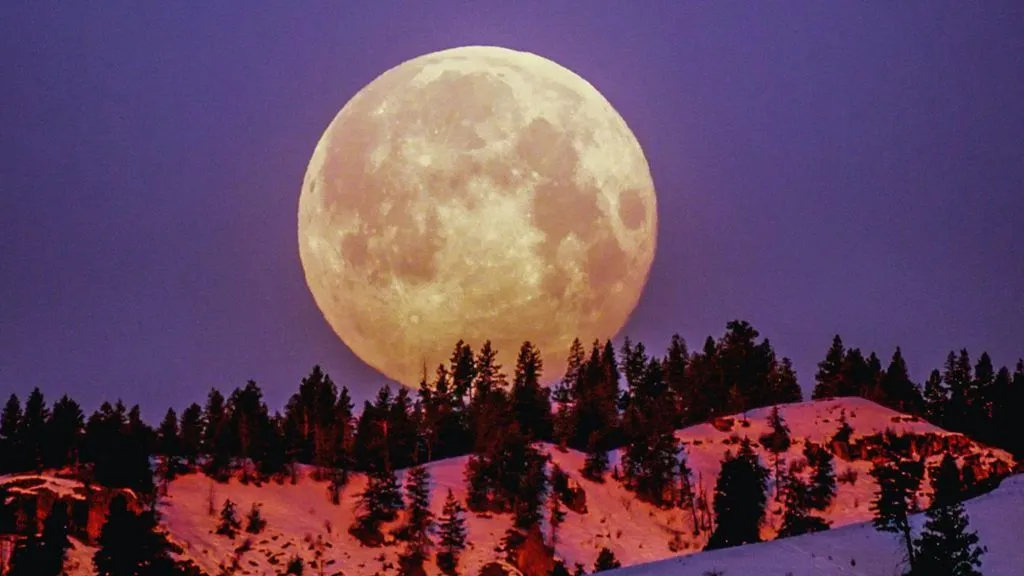The night sky is full of wonders, and one of the most fascinating celestial events each month is the full moon. In February, this full moon is known as the Snow Moon. It is a beautiful sight and has an interesting history behind its name. But what exactly is the Snow Moon? When will it appear in 2025, and how can you see it clearly? In this article, we will explore everything you need to know about February’s Snow Moon, from its origins to the best ways to view it.
What is the Snow Moon?
The Snow Moon is the name given to the full moon that occurs in February. Each full moon of the year has a unique name, often based on old traditions, folklore, and Native American customs. These names usually describe the natural events, weather patterns, or animal behaviors associated with that month.
February is one of the coldest months of the year in the Northern Hemisphere, and heavy snowfall is common in many regions. Because of this, Native American tribes, as well as European settlers, started calling February’s full moon the Snow Moon. The name has been used for centuries and is still widely recognized today.
Why is the Snow Moon Important?
The Snow Moon holds significance for various cultures. For Native American tribes, the full moon often helped mark important seasonal changes. Since February was a harsh month with deep snow, it was a time when hunting became difficult. Some tribes also called this moon the Hunger Moon because food was often scarce.
In ancient European traditions, full moons were important for tracking the passage of time. Many cultures used lunar calendars to keep track of the seasons. Even today, some people believe full moons influence human emotions, tides, and even farming practices.
When Will the Snow Moon Appear in 2025?
The Snow Moon in 2025 will reach its peak on Friday, February 14. The moon will appear full for about three days, from the night before to the night after. If you miss it on the exact date, you can still enjoy its bright glow in the surrounding nights.
The exact timing of the full moon can vary depending on your location. In the United States, the moon will officially reach its full phase at 12:53 PM Eastern Time (ET). However, since the moon is not visible during daylight, the best time to see it will be after sunset when it rises in the evening.
How to See the Snow Moon?
Viewing the Snow Moon is easy because it is a natural event visible to everyone with clear skies. Here are some tips to help you get the best experience:
1. Find Out the Moonrise Time
The moon rises at different times depending on your location. You can check an online moonrise calendar or a weather app to find the exact time it will appear in your area. Generally, the Snow Moon will rise in the eastern sky around sunset.
2. Choose a Good Viewing Spot
For the best view of the Snow Moon, find a location with a clear, unobstructed view of the horizon. Areas away from city lights, such as parks, open fields, or hilltops, will provide a better experience. If you live in a city, try to find a tall building or rooftop where you can see the sky clearly.
3. Check the Weather
Cloudy skies can block your view of the moon. Before heading out, check the weather forecast to make sure the sky will be clear. If the weather doesn’t cooperate, you can still enjoy live streams from observatories and space agencies online.
4. Use Binoculars or a Telescope
Although the full moon is visible to the naked eye, using binoculars or a telescope can enhance the experience. You’ll be able to see details like craters, mountains, and valleys on the moon’s surface.
5. Take Photos of the Snow Moon
If you enjoy photography, capturing the Snow Moon can be a fun challenge. Use a camera with a good zoom lens or even a smartphone with night mode. Try taking pictures just after the moon rises, as it will appear larger near the horizon due to an optical illusion called the Moon Illusion.
How Does the Snow Moon Affect Nature and People?
The full moon, including the Snow Moon, has been believed to influence various aspects of life on Earth. While some effects are scientifically proven, others are based on folklore and beliefs.
1. Tides
The moon’s gravity affects ocean tides. When the moon is full, the gravitational pull is stronger, leading to higher high tides and lower low tides. This is called a spring tide, which happens during both full and new moons.
2. Animals
Some animals, especially nocturnal ones, may change their behavior during a full moon. For example, some predators hunt more actively because the moon provides extra light. Studies have also shown that certain fish and coral species time their reproduction cycles with the lunar phases.
3. Human Sleep Patterns
Some people believe the full moon affects sleep. Scientific studies have suggested that people may experience lighter sleep or take longer to fall asleep during a full moon. However, the reasons for this are still being studied.
4. Myths and Superstitions
Throughout history, full moons have been linked to myths and superstitions. Some cultures believe that a full moon can influence human emotions or lead to unusual behavior. This is where the idea of “lunacy” or “moon madness” comes from. While there is no strong scientific proof of this, the full moon has inspired countless stories, legends, and even horror movies.

Other Names for February’s Full Moon
Different cultures and traditions have their own names for February’s full moon. Here are some of them:
- Hunger Moon – Used by some Native American tribes because food was scarce.
- Storm Moon – A name from European traditions referring to winter storms.
- Bone Moon – Some tribes called it this because people had to eat bone marrow from leftover food to survive the harsh winter.
Upcoming Full Moons in 2025
If you enjoy watching full moons, here is a list of the full moons for the rest of 2025:
- March 14 – Worm Moon
- April 13 – Pink Moon
- May 12 – Flower Moon
- June 11 – Strawberry Moon
- July 10 – Buck Moon
- August 9 – Sturgeon Moon
- September 7 – Corn Moon
- October 6 – Hunter’s Moon
- November 5 – Beaver Moon
- December 5 – Cold Moon
Each of these full moons has a unique story and is worth watching throughout the year.
Final Thoughts
The Snow Moon is a beautiful and meaningful celestial event that happens every February. It gets its name from the heavy snowfall during this time of year and has been significant to many cultures throughout history. The best way to see the Snow Moon in 2025 is to find a clear spot, check the weather, and enjoy its bright glow in the sky. Whether you watch it with the naked eye, use a telescope, or capture it with your camera, the Snow Moon is a reminder of the wonders of our universe.
So, mark your calendar for February 14, 2025, and don’t miss the chance to witness this spectacular full moon!






